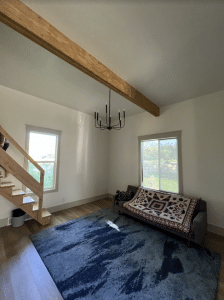When we think about energy-efficient homes, insulation, windows, and heating systems often come to mind. However, there’s an unsung hero in the realm of energy efficiency that plays a crucial role—drywall. Yes, the seemingly ordinary building material that lines our walls has a significant impact on a home’s energy performance. In this guide, brought to you by Utah Drywall and Repair, we’ll explore the often-overlooked role of drywall in energy efficiency and how it contributes to a more sustainable and comfortable living environment.
Energy efficiency is not only about reducing utility bills but also about minimizing our environmental footprint. It involves making smart choices in building materials and construction practices to create comfortable and sustainable living spaces.
Contents
Understanding Drywall’s Role in Energy Efficiency
Drywall, often overlooked in energy discussions, plays several key roles in enhancing a home’s energy efficiency:
Drywall’s Thermal Insulation Properties
Drywall possesses inherent thermal insulation properties that help regulate indoor temperatures. When properly installed, it contributes to maintaining a comfortable indoor climate, reducing the load on heating and cooling systems.
Air Sealing and Draft Reduction
Drywall acts as an essential element in creating an airtight building envelope. Properly installed drywall sheets, seams, and joints help prevent air leaks, minimizing drafts that can lead to energy waste.
Sound Insulation and Comfort
In addition to its thermal properties, drywall also provides sound insulation. It dampens noise from both outside and inside the home, enhancing overall comfort and reducing the need for excessive heating or cooling to counteract noise-related discomfort.
Choosing the Right Drywall
Selecting the appropriate type of drywall can further enhance energy efficiency:
- Regular Drywall: Standard drywall is an excellent choice for most applications, providing a good balance of cost and performance.
- Soundproof Drywall: In areas prone to noise pollution, soundproof drywall can enhance comfort and reduce the need for additional insulation.
- Fire-Resistant Drywall: In regions with extreme temperature variations or wildfire risks, fire-resistant drywall can provide added protection and improve energy efficiency.
Installation and Maintenance
Proper installation is crucial to realizing drywall’s energy-efficient benefits. It’s essential to hire experienced professionals who follow best practices for sealing gaps, taping seams, and applying joint compound to minimize air leaks. Routine maintenance, such as sealing cracks and repainting, can further ensure drywall’s long-term energy performance.
Conclusion
Drywall may seem like a simple and unassuming part of a building’s structure, but it plays a significant role in enhancing energy efficiency and overall comfort. Its thermal insulation properties, air sealing capabilities, and soundproofing qualities all contribute to a more sustainable and pleasant living environment. When selecting drywall for your home, consider the specific needs of each room and consult with experts like Utah Drywall and Repair at 801-406-6350 or visit our website drywallrepairutah.com. We’re here to help you make informed choices that improve energy efficiency and reduce your environmental impact.




